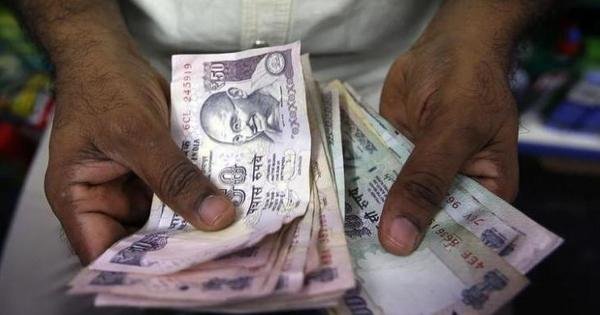
- Select a language for the TTS:
- UK English Female
- UK English Male
- US English Female
- US English Male
- Australian Female
- Australian Male
- Language selected: (auto detect) - EN
Play all audios:
On Dec. 21, 2021, the Oklahoma Department of Health announced that the highly contagious Omicron variant had officially been detected in the Sooner State. Later that month, the Eastern
Oklahoma VA Health Care System (EOVAHCS) saw a dramatic increase in the number of Veterans and VA staff needing COVID-19 tests. With 37 tests a day being the normal average, EOVAHCS had to
quadruple its efforts to 153 tests per day. “We’ve been busy before, but not like this,” said Barbara Leseberg, Charge Nurse for the Tulsa testing team. “We would have 20-30 cars lined up at
7:30 in the morning.” EOVAHCS conducts testing at the Jack C. Montgomery VA Medical Center, Ernest Childers VA Outpatient Clinic, McAlester VA Outpatient Clinic and Vinita VA Outpatient
Clinic. From Dec. 22 – Jan. 21, a total of 3,073 tests were performed, three times the normal rate of testing. “During this surge, the sheer numbers have been the biggest obstacle,” said
Shalan Cope, an RN on the Muskogee testing team. “You are literally swabbing faster than one can chart. You can feel very overwhelmed. However, I have a great nurse manager and co-workers
and this makes the hard times better.” Cope said she noticed a high level of anxiety at the beginning of the surge. “Traffic was very bad,” she said. “Some came walking over and we’re
standing out in the cold weather. I don't know if they felt they would not get served or if they thought we would run out of tests. People were anxious and scared.” Adding to the
challenge of high demand was winter weather and extremely cold days. “The cold has been brutal,” said Leseberg. “When one person gets too cold, they come in and get warmed up. We switch out
nurses so that none of us are outside for more than 30 minutes.” Through the ups of downs of yet another surge, our COVID-19 testing staff has risen to the challenge. “The team did extremely
well to provide the tests despite the bitter cold,” said Robert Gaygay, nurse manager for the COVID-19 testing and immunization team. “It’s unimaginable the level of resilience they have
exhibited. We are all exhausted, but they mustered the extra strength.” Just as the testing teams stepped up in the face adversity, the Lab departments did as well. The goal is to get
Veterans their positive result in two to four hours. “We weren’t really expecting the increased demand that came after Christmas,” said Emily Blankenship, lead medical technologist at the
Ernest Childers VA Outpatient Clinic. “We came in on Monday (Dec. 27) and all of a sudden we had 150 patients that needed swabs done the same day. We had to come together as a team and try
and figure out how to still do our normal work and get results out in a timely manner.” Amelia Fleming, an LPN on the Muskogee testing team, said teamwork across VA departments has been key
to Veterans and VA staff getting their test results as quickly as possible. “Wait times have been very minimal due to great staff, including Employee Occupational Health and our providers
who place orders in a timely and effective manner,” said Fleming. “Team work here is awesome.” COVID-19 TREATMENT Of the more than 3,000 tests conducted in a single month, 1,052 patients
were positive. The month prior to the surge, only 136 were positive. Dr. Doug Raymer, a physician at the Tulsa Clinic, is one of four providers who evaluates Veterans who test positive and
discusses their treatment options. “We take each Veteran individually and then we determine if they have risk factors that would put them in a position where they could get anti-viral
treatment or monoclonal antibody therapy,” he said. Veterans with higher risk factors are seen outside by VA providers. “That’s something a little unique that we’re doing that is more
aggressive than the community,” said Dr. Raymer. “While we’re evaluating them outside, we can make decision whether we need to do something more aggressively.” In addition to monoclonal
antibody therapy and oral anti-viral medication, Dr. Raymer said EOVAHCS made the decision to begin using remdesivir infusion treatment in an outpatient setting. “There were studies coming
out backed by the National Institutes of Health that we could use remdesivir in the outpatient setting which was being previously used only in the inpatient setting,” he said. “I believe in
this community, we were one of the first to do that and we were very aggressive immediately to get that process rolling.” The Jack C. Montgomery VA Medical Center provides outpatient
infusion treatment for Veterans who are prescribed the treatment. Before the surge, the Muskogee hospital provided eight infusions per day. That number was increased to 20 per day to meet
the demand. “We’re at capacity or almost at capacity for the morning and the afternoon infusions,” said Deniece Anderson, one of several nurses works in the COVID-19 infusion clinic.
“Patients are scheduled for 8 a.m. and 1 p.m. and we have extended our hours to include weekends and holidays so that all Veterans can receive infusions as needed. With the numbers
continually increasing, I don't see any end to this in the immediate future.” Dr. Raymer said getting a COVID-19 vaccination will likely lessen the severity of symptoms. “When I’m
talking on the phone with a Veteran, I can almost tell who has been vaccinated and who has not,” he said. “If you’ve had the vaccine, you’re doing much better. You have less than a 4% chance
of being hospitalized if you’re vaccinated. But each person will respond differently. The more risk factors you have, we especially want you to be vaccinated.”






